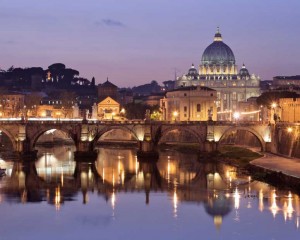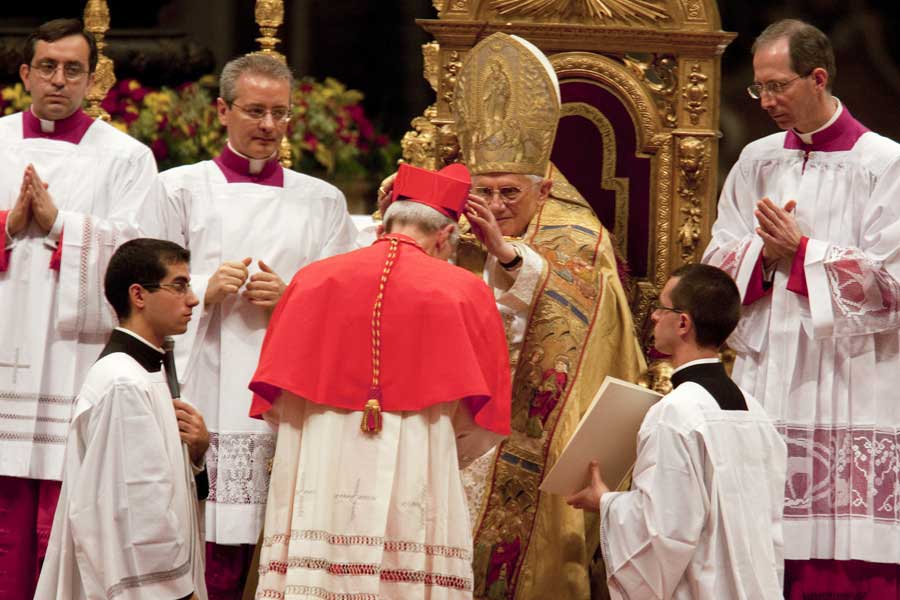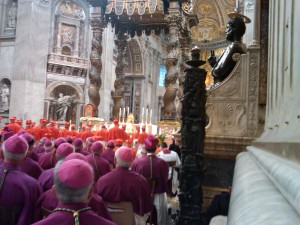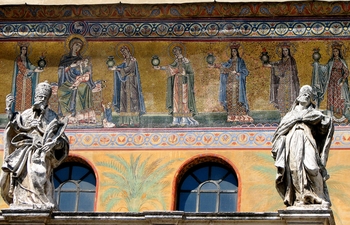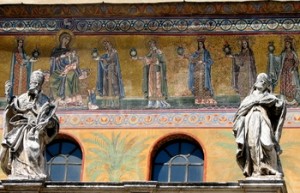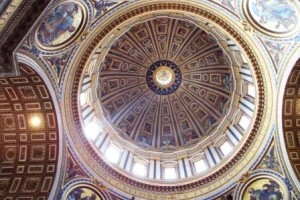I am of the mind that one of the great treasures and masterpieces of the Church’s Gregorian Chant is the sequence hymn for funeral Masses, Dies Irae. It is almost never done at funeral today though it remains a fixture of the Extraordinary form Mass. I know it is a “heavy” hymn with a sobering message, but it sure is glorious. The gorgeous chant was one of the more beautiful and soaring melodies of Gregorian Chant and manycomposers such as Mozart and Verdi set the text to stirring musical compositions. With November, the month of All souls winding down and Advent before us, perhaps this hymn deserves a look.
Ah the Dies Irae! It’s syllables hammering away in trochaic dimeter: Dies irae dies illa solvet saeclum in favilla, teste David cum Sybila! (Day of wrath that day when the world dissolves to ashes, David bears witness to it along with the Sibyl!) Perhaps at times it is a bit heavy but at the same time no hymn more beautifully sets forth a basis for God’s mercy. The dark clouds of judgment part and give way to the bright beauty of the final line Pie Jesu Domine, dona eis requiem (Sweet Jesus Lord, give them [the dead] rest).
The hymn was not composed for funerals. Actually it was composed by Thomas of Celano in the 13th century as an Advent Hymn. Yes, that’s right an Advent hymn. Don’t forget that Advent isn’t just about getting ready for Christmas, it is about getting ready for the Second Coming of the Lord. And that is what this hymn is really about. At this time of year, as the the leaves fall and summer turns to winter, we are reminded of the passing of all things. The Gospels we read are those that remind us of death and the judgment to come.
Journey with me into the beauty and solemn majesty of this hymn. I will give you an inspiring English translation by W J Irons, one that preserves the meter and renders the Latin close enough. A few comments from me along the way but enjoy this largely lost masterpiece and mediation on the Last Judgment. (You can see the Latin Text along with English here: Dies Irae)
The hymn opens on the Day of Judgement warning that the day will reveal God’s wrath upon all injustice and unrepented sin. God’s wrath is his passion to set things right. And now it is time to put an end of wickedness and lies:
-
- Day of wrath and doom impending,
- Heaven and earth in ashes ending:
- David’s words with Sibyl’s blending.
And all are struck with a holy fear! No one and no thing can treat of this moment lightly: all are summoned to holy fear. The bodies of the dead come forth from their tombs at the sound of the trumpet and will all of creation answer to jesus, the Judge and Lord of all:
-
- Oh what fear man’s bosom rendeth
- When from heaven the judge descendeth
- On whose sentence all dependeth!
- Wondrous sound the trumpet flingeth,
- Through earth’s sepulchers it ringeth,
- All before the throne it bringeth.
- Death is struck and nature quaking,
- All creation is awaking,
- To its judge an answer making.
- Lo the book exactly worded,
- Wherein all hath been recorded,
- Thence shall judgement be awarded.
- When the Judge his seat attaineth,
- And each hidden deed arraigneth:
- Nothing unavenged remaineth.
Judgment shall be according to our deeds, whatever is in the Book (Rev 20:12; Romans 2:6)! Ah but also in God’s Word is the hope for mercy and so our hymn turns to ponder the need for mercy and appeals to God for that mercy:
-
- What shall I frail man be pleading?
- Who for me be interceding?
- When the just are mercy needing?
- King of majesty tremendous,
- Who does free salvation send us,
- Font of pity then befriend us.
- Think kind Jesus, my salvation,
- Caused thy wondrous incarnation:
- Leave me not to reprobation.
- Faint and weary thou hast sought me:
- On the cross of suffering bought me:
- Shall such grace be vainly brought me?
- Righteous judge for sin’s pollution,
- Grant thy gift of absolution,
- Before the day of retribution.
- Guilty now I pour my moaning:
- All my shame and anguish owning:
- Spare, O God my suppliant groaning.
- Through the sinful Mary shriven,
- Through the dying thief forgiven,
- Thou to me a hope has given.
Yes there is a basis for hope! God is rich in mercy and, pondering the Day of Judgment is salutary since for now we can call on that mercy. And, in the end it is only grace and mercy that can see us through that day:
-
- Worthless are my tears and sighing:
- Yet good Lord in grace complying,
- Rescue me from fire undying.
- With thy sheep a place provide me,
- From the goats afar divide me,
- To thy right hand do thou guide me.
- When the wicked are confounded,
- Doomed to flames of woe unbounded:
- Call me with thy saints surrounded.
- Lo I kneel with heart-submission,
- See like ashes my contrition:
- Help me in my last condition.
And now comes the great summation: That Day is surely coming! Grant me O lord your grace to be ready:
-
- Lo, that day of tears and mourning,
- from the dust of earth returning.
- Man for judgement must prepare him,
- Spare O God, in mercy spare him.
- Sweet Jesus Lord most blest,
- Grant the dead eternal rest.
A masterpiece of beauty and truth if you ask me. Some years ago I memorized most of it. I sing it from time to time over in Church late at night, the hauntingly beautiful chant rings through the echoing arches of our Church. When I die sing it at my funeral! For I go to the Lord, the judge of all and only grace and mercy will see me through. Perhaps the plaintive calls of the choir below at my funeral will resonate to the very heavens as I am judged. And maybe the Lord will look at me and say,
-
- I think they’re praying for you down there, asking mercy.”
- “Yes, Lord, mercy.”
- “They’re making a pretty good case.”
- Yes Lord, mercy.
- Then mercy it shall be
Amen.
Dies Irae from elena mannocci on Vimeo.

